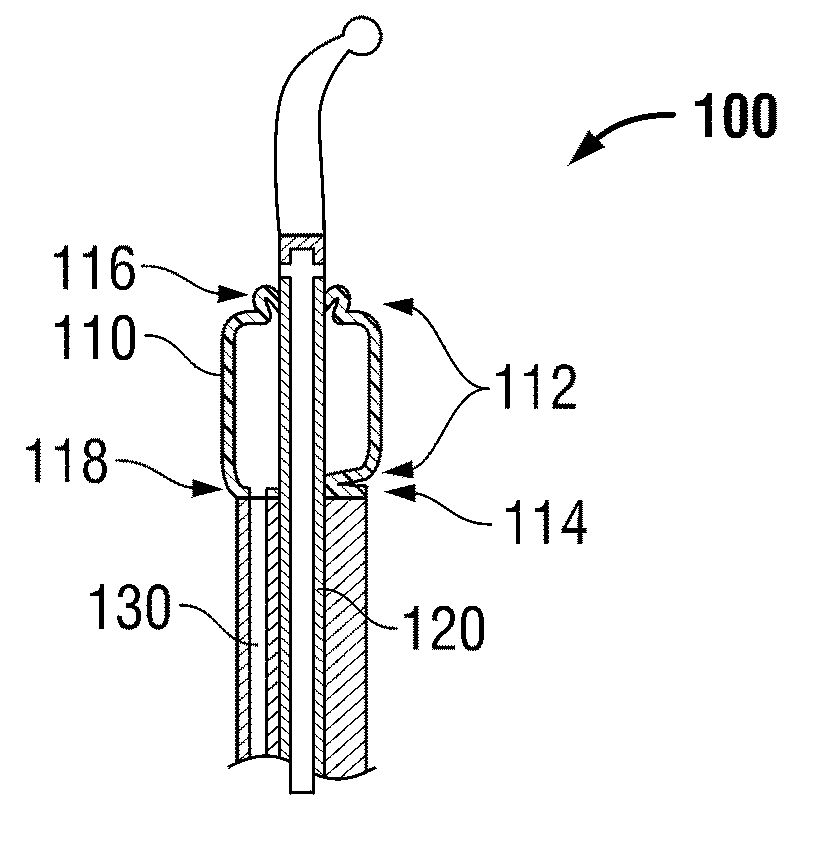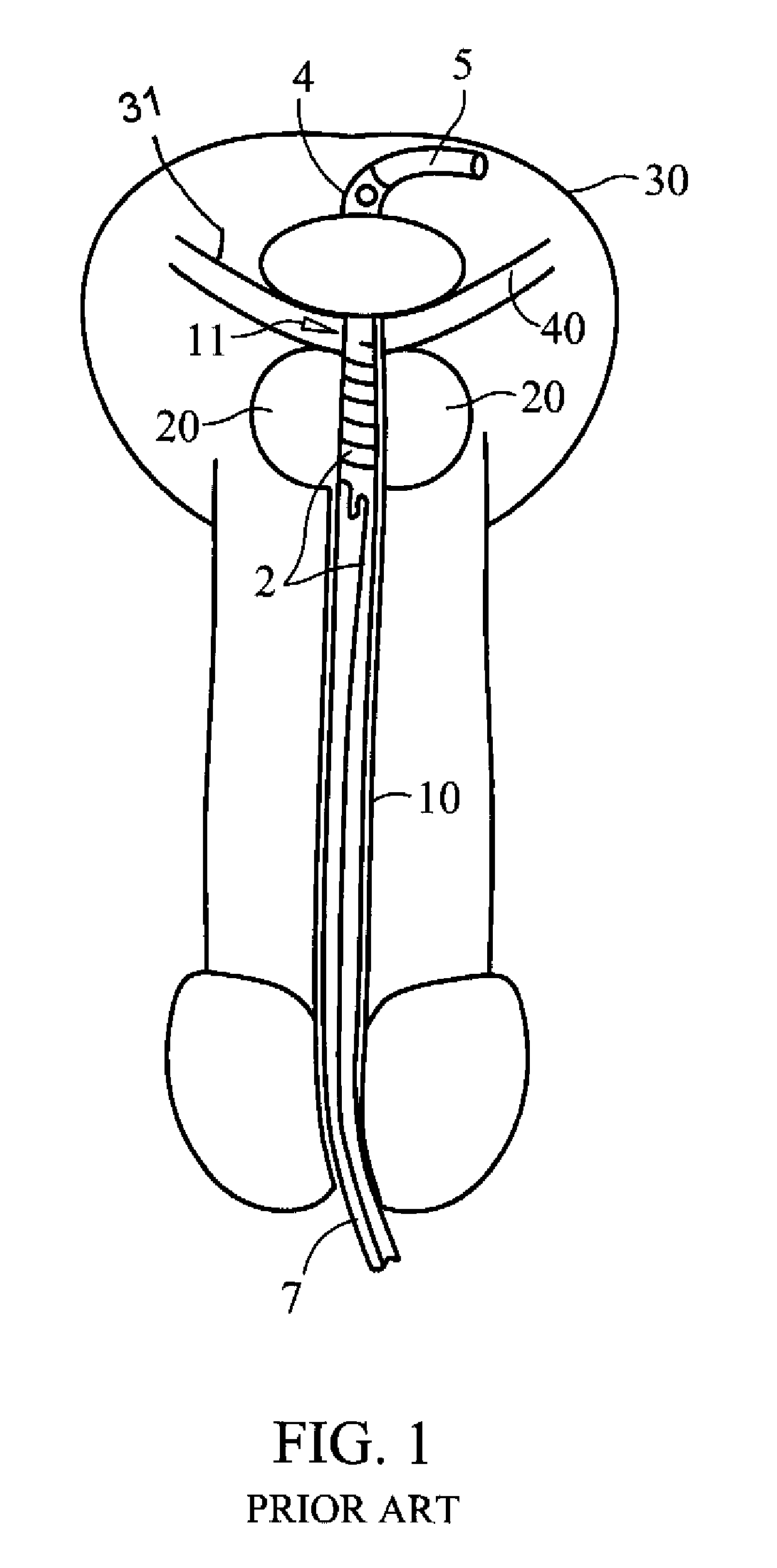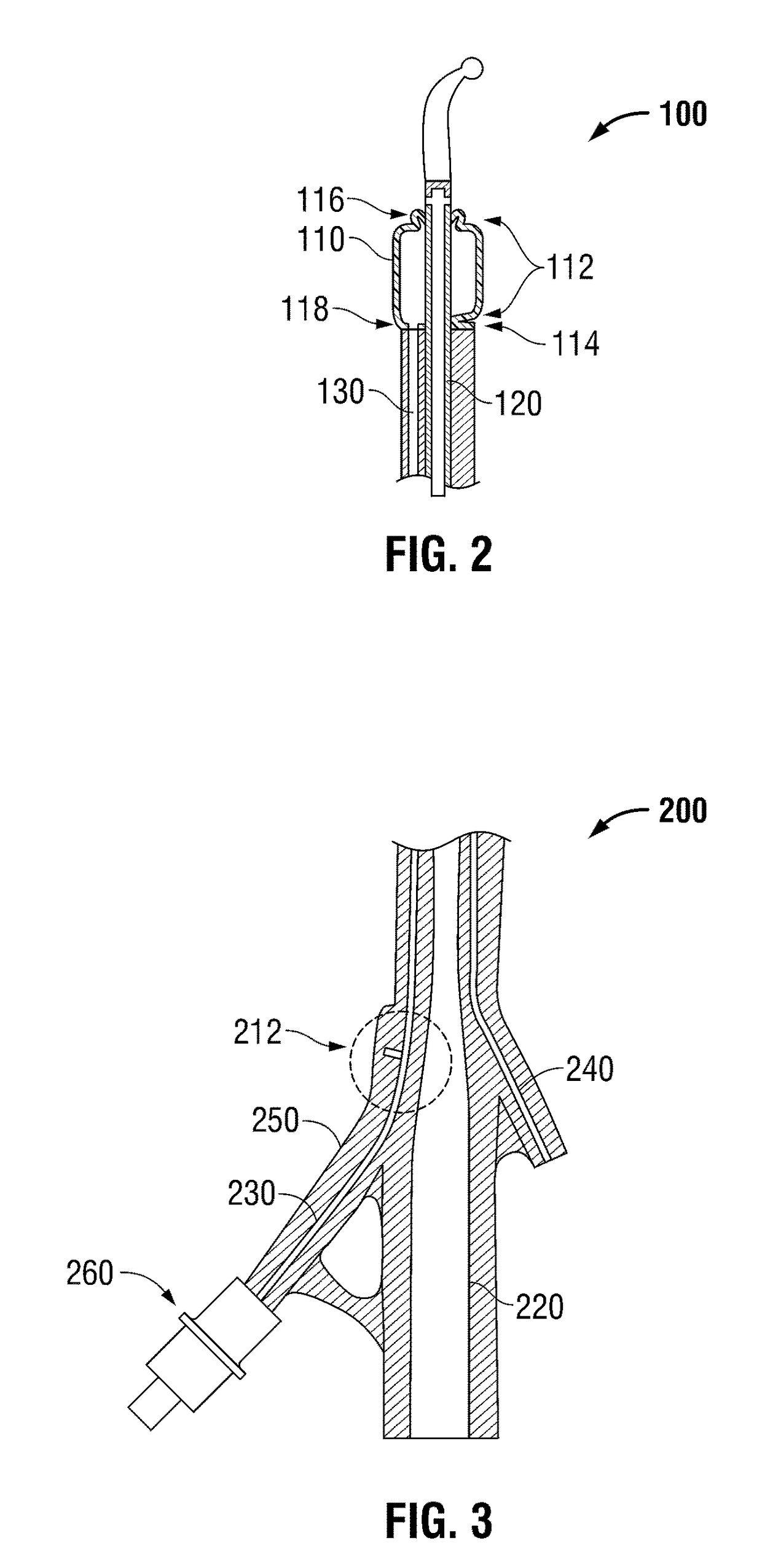Illuminating balloon catheter and method for using the catheter
a technology of illuminating balloons and catheters, which is applied in the field of catheters, can solve the problems of less-skilled technicians, less-skilled health care personnel, and aging of a large percentage of the population, and achieve the effect of quick and rapid deflating
- Summary
- Abstract
- Description
- Claims
- Application Information
AI Technical Summary
Benefits of technology
Problems solved by technology
Method used
Image
Examples
first embodiment
[0154]Referring now to the figures of the drawings in detail and first, particularly to FIG. 2 thereof, there is shown a pressure-limiting balloon catheter 100 that does not inflate past the tearing limit of a lumen in which the catheter 100 is placed, for example, in the urethra.
[0155]To prevent occurrences of urethra tearing due to premature-improper inflation of the balloon and / or due to premature removal of an inflated balloon, the invention of the instant application provides the balloon 110 with a balloon safety valve 112. As set forth above, in a balloon 3 of a conventional catheter (see reference numerals 1 to 5 in FIG. 1), the balloon 3 is fixed to the outer surface of the fluid drainage line 120 (not shown in FIG. 1) and is not intended to be removed therefrom or to burst thereon unless an extraordinary amount of inflation occurs. Such a tearing event is not supposed to occur under any circumstances during use with a patient. If such an event happens, the material of the b...
second embodiment
[0161]the one-use breaking safety valve of a pressure-limiting balloon catheter 200 is shown in FIG. 3. The catheter 200 has a fluid drainage line 220, a balloon inflation lumen 230, and a secondary lumen 240.
[0162]The fluid drainage line 220 is connected fluidically to the body cavity (i.e., the bladder 30) for draining fluid from the body cavity.
[0163]The secondary lumen 240 can be used for any purpose, for example, for housing the radiation line that will supply energy to the radiation coil 2. It can also be used for injecting fluid into any distal part of the catheter 200 or even the body cavity itself.
[0164]The balloon inflation lumen 230 begins at a proximal end with an inflating connector 260 that, in a preferred embodiment, is a female luer connector (of course, it can be a male luer connector too). The balloon inflation lumen 230 continues through the body of the catheter 200 all the way to the balloon and is fluidically connected to the interior of the balloon.
[0165]The ba...
fifth embodiment
[0191]FIG. 17 illustrates a fifth alternative embodiment of the illuminating balloon catheter 100. Specifically, the illuminating device 200 is tubular and is led through the fluid drainage lumen 120 in a longitudinally movable manner. The illuminating device 200 has a distal-most portion at which is disposed an illuminator 206a. The illuminator 206a can be formed from an unshielded portion of a fiber optic or can be an LED having an illumination direction disposed along a radial line orthogonal to the longitudinal extent of the illuminating device 200. Because the illuminating device 200 can be rotated 360 degrees inside the fluid drainage lumen 120, a portion of the drainage assembly 150 inside the balloon is transparent. Thus, as the illuminator 206a is rotated within the fluid drainage lumen 120, the light beam also rotated within the balloon. In this embodiment, therefore, the catheter need not be rotated inside the patient's urethra. To make sure that a majority of the illumin...
PUM
 Login to View More
Login to View More Abstract
Description
Claims
Application Information
 Login to View More
Login to View More - R&D
- Intellectual Property
- Life Sciences
- Materials
- Tech Scout
- Unparalleled Data Quality
- Higher Quality Content
- 60% Fewer Hallucinations
Browse by: Latest US Patents, China's latest patents, Technical Efficacy Thesaurus, Application Domain, Technology Topic, Popular Technical Reports.
© 2025 PatSnap. All rights reserved.Legal|Privacy policy|Modern Slavery Act Transparency Statement|Sitemap|About US| Contact US: help@patsnap.com



